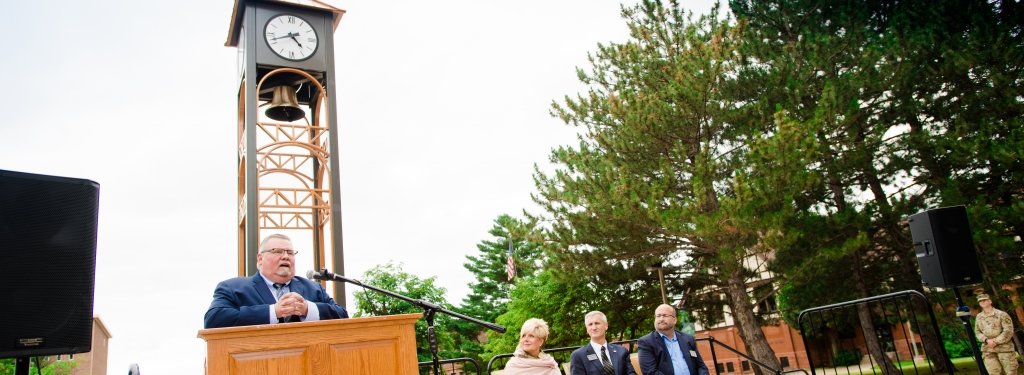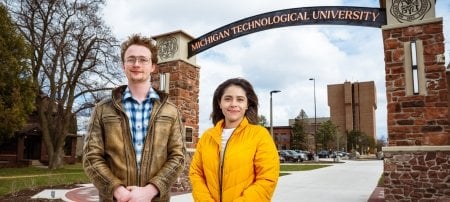Michigan Technological University’s Chem-E-Car team took second place at the American Institute of Chemical Engineers’ (AIChE) 2016 North-Central Regional Conference Chem-E-Car Competition.
The competition was hosted by Miami University of Ohio on April 16. Seventeen universities participated.
The competition is designed to engage college students in designing and constructing a car powered by a chemical energy source that will safely carry a specified load over a given distance and stop.

The Michigan Tech team’s chemical energy source was a silver oxide battery of their own design. The team was given a payload of 195 grams and a distance of 19.5 meters.
Stopping Reaction
Their car's stopping reaction (the chemical reaction that caused the vehicle to stop moving) was a vitamin C clock reaction. The solution for the vitamin C clock reaction starts clear, then instantaneously turns a dark violet. The time it takes for this to happen is based on the concentration of products.
The solution is placed between an LED light and a photo diode. When the solution is clear, the photo diode picks up light from the LED and continues to run. When the solution changes color, the light from the LED is blocked, and the photo diode signals the motor of the vehicle to stop.
The team was given two attempts to reach 19.5 meters. On their best attempt, their car ended up only 41 centimeters shy of its goal.
Top Five Universities
The top five schools qualified to compete at the AIChE’s national competition in San Francisco in November. The top five schools and their distances from the target were:
- Michigan State University, with a distance from target of 0.11 meters.
- Michigan Tech, distance from target 0.41 meters.
- University of Michigan Team B (U of M had 2 teams), distance from target 0.50 meters.
- Purdue University, distance from target 0.51 meters
- Trine University, distance from target 1.02 meters
“We wouldn't have been able to succeed if it wasn't for the support we received from Associate Professor Tomas Co who served as our team's adviser; Associate Professor Tony Rogers, who served as our outside expert on our Engineering Documentation Package (EDP); Matt Heyse, who served as an outside expert on circuitry; and the Chemical Engineering Department at Michigan Tech,” said Marco Ramon, co-leader of the ChemE Car team.
Michigan Technological University is a public research university founded in 1885 in Houghton, Michigan, and is home to more than 7,000 students from 55 countries around the world. Consistently ranked among the best universities in the country for return on investment, Michigan’s flagship technological university offers more than 120 undergraduate and graduate degree programs in science and technology, engineering, computing, forestry, business and economics, health professions, humanities, mathematics, social sciences, and the arts. The rural campus is situated just miles from Lake Superior in Michigan's Upper Peninsula, offering year-round opportunities for outdoor adventure.






Comments